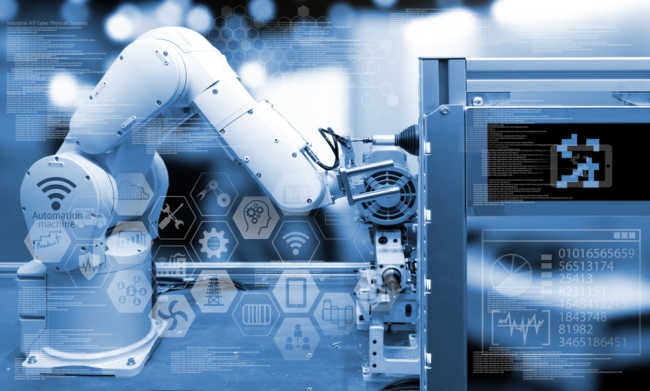Will my IoT Initiative Work in a Heavy Industry Environment?
When working on a new IoT project, it’s not a bad idea to start your plans with the end environment in mind. It’s clear that IoT has its benefits, whether in warehousing, supply chain, or any other industry, but the physical setting itself can make or break some applications. Also, the features of your environment are less likely to be as flexible as other aspects of an IoT project.
So how do you know if you your undertaking is feasible for a heavy industry site?
Unfortunately, there’s no line-by-line standard layout for factories, warehouses, energy plants, or other industrial settings. This makes it tough to anticipate the specific quirks that these environments will pose for industrial IoT (IIoT) adopters. Unanticipated difficulties with the site itself can easily become unexpected costs, unplanned downtime, delayed ROI, and so on.
There’s no exhaustive list of checkboxes to consider before smartening up your plant or factory, but it’s worth noting that quite a few heavy industry settings share the following common threads:
- Limited options for power and connectivity
- Potential for RF interference
- High costs for upgrading infrastructure
- Unique equipment and machinery
- Lots of physical stuff
Now, there’s really no replacement for on-site testing and validation, but even then you’ll need to consider items like these. Also, no matter how you prepare, you’ll still probably face your share of challenges, expenses, and surprises. But in the end you’re a lot less at risk of starting a losing battle if you know your environment well enough to address these items beforehand.
Limited Options for Power and Connectivity
If you’re implementing any kind of IIoT solution, you’ll need to power something and to connect it somehow. This might seem obvious, but heavy industry environments usually limit your options for how to make this happen.
Unlike corporate campuses where wall outlets (or even walls) abound, industrial sites might instead rely on Power over Ethernet, mobile generators, or even rechargeable batteries for new technologies being inserted. These kinds of locations might also have extra regulations and protocols that limit how or where you can power new devices.
Likewise, industrial settings don’t always have the connective infrastructure to handle data from multiple sensors, to communicate off-site, or even to get stable access to the internet. You’ll need to determine how to transmit the needed data without overwhelming or interfering with site communications. This sometimes means starting from scratch where digital connectivity is concerned.
Potential for RF Interference
Quite a few IoT initiatives employ some kind of radio frequency (RF) technology. If your project is one of these, it’s worth preparing for the risk of RF interference in industrial settings. Warehouses, construction sites, refineries, and factories are often like petri dishes for RF noise, signal attenuation, multipath propagation, and other challenges. These aren’t insurmountable, but they can be pesky problems.
For example, welding can cause all sorts of RF noise. This will probably be harmless at a physical level, but it does have the potential to interfere with wireless data transmission. Lost data can mean a lost shipment or a delayed safety alert, so interference like this can be a major operational problem.
Multipath propagation is another common issue. Multipath essentially means that radio transmissions are reaching a receiver via more than one path—such as by a direct route and a reflection off an object like a sheet of metal.
This can be disruptive for some general types of radio communication as well as specific applications like location-based asset tracking or safety zoning. Because it can introduce jitter and unreliability in radio signals, multipath has the potential to cause false positives and negatives, signal fading, and data loss. And since reflective surfaces and obstacles are commonplace in heavy industry, there’s often not a way to avoid it. It is possible, however, to plan for it and to counteract it well.
High Costs for Upgrading Infrastructure
For industrial settings, adding, altering, or retrofitting infrastructure gets pricey in a hurry. This isn’t really because the labor or materials are abnormally expensive. It’s really a matter of uptime and downtime.
Unlike office locations where most work shuts down after hours, many industrial sites are already counting on around-the-clock operation, so there might be no such thing as an ideal time for upgrades. The thing is, making infrastructural changes often requires a pause in site operations somewhere. This creates extra costs for halted work.
Imagine a factory producing a value of just $100 per minute. A single eight-hour day of downtime costs at least $48,000 at that rate. Depending on how you calculate this, the costs can be much higher. If, for instance, that day of downtime results in a delayed shipment, a lost customer, damaged trust with a partner, or any other operational issue, then the cost rockets up yet again.
This means that even a small amount of downtime will often outweigh the base costs of adding new sensors, rewiring a section of the plant, or reallocating space on the floor. So, when discussing costs, benefits, and milestones of an IIoT solution—which might require significant downtime to implement—it’s in everyone’s interest to look closely at what the implementation means for the schedule and how the ROI balances things out. It’s also well worth looking for innovative ways to implement IIoT without pausing on-site operations. A long implementation phase isn’t always required to make IIoT projects work.
Unique Equipment and Machinery
Nearly every corporate cubicle looks the same. But how many industrial sites use the same layout or the same machines? Similarly, the lifespan of a computer or desk phone tends to be somewhat predictable, so you know how many years should pass before it’s time for something new. Heavy industry, on the other hand, might depend on getting 50 years or more from the same machine.
So, what’s the problem? The problem is that rinse-and-repeat strategies are much harder here than in many other industries. Working in heavy industry often means dealing with one-of-a-kind equipment, process, policies, and even floor configurations.
As an example, think about working in a refinery with equipment installed at different times over thirty or forty years. Even if each machine uses completely identical parts, the differences in age or wear-and-tear make it very difficult to construct meaningful digital twins or to anticipate comparable problems and areas for improvement across the board. This also makes project management more cumbersome, since you have to account for maintenance schedules and upgrades that don’t coincide, unique machinery and tools in one part of the plant, and potential needs for different types of data on each separate machine or work station.
These kinds of one-and-only situation can also mean that you’re dealing with unique requirements for powering or connecting each item. As a result, you might have to invest in extra customization efforts for old factories, power plants, and other heavy industry environments.
Lots of Physical Stuff
Last but not least, accounting for the physical stuff in heavy industry settings should be part of your prep to roll out an IIoT project. Your plan might need to address high-volume assets such as actual inventory. It might also address high-risk materials like hazardous or volatile substances. From a safety perspective it’s also key to consider the presence of fast-moving objects like robotic arms, forklifts, and unmanned vehicles.
You’ve probably heard eager claims about the benefits of digitally connecting all of these objects in the same system—and obtaining those benefits is becoming more and more feasible. But you’ll have to decide where to start, what to connect, what to leave as is, how to address clutter, how to optimize your physical space, and a host of other things related to physical stuff.
This can actually be a simple element to assess, especially if you’re designing your IIoT undertaking to solve a specific, measurable problem. It does still take planning, though. Without adequate prep, your autonomous vehicles could knock unwieldy sensors off their new stations. Vibrating machinery could dislodge wireless devices connected for predictive maintenance. Mountains of inventory and equipment could block an RF signal. So make sure to devote some time and thought to the actual objects in your environment.
In Sum
There are more and more ways to make IoT solutions work anywhere. Heavy industry settings are tricky, to be sure, but doing your homework can get you past the big obstacles. And that’s when you’ll start seeing real value.
 This article was written by Stephen Taylor, Director of Communications at WISER Systems, Inc., a leading ultra-wideband (UWB) provider of precise localization. When he’s not at work, he likes to jam on his violin, write creatively, or wander through the forest. Someday he’ll try all three things at once.
This article was written by Stephen Taylor, Director of Communications at WISER Systems, Inc., a leading ultra-wideband (UWB) provider of precise localization. When he’s not at work, he likes to jam on his violin, write creatively, or wander through the forest. Someday he’ll try all three things at once.
